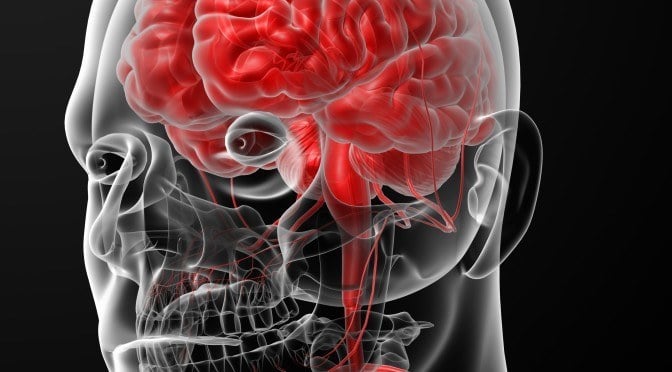Inflammatory Disorders
Meningitis (men-in-ji ‘-tis) results from a bacterial, fungal, or viral infection of the meninges. Bacterial meningitis cases are the most serious, with about 20% being fatal. If the brain is also involved, the disease is called encephalitis. Some viruses causing encephalitis are transmitted by bites of certain mosquitoes.
Neuritis is the inflammation of a nerve or nerves. It may be caused by several factors, such as infection, compression, or trauma. Associated pain may be moderate or severe.
Sciatica (si-at’-i-kah) is neuritis involving the sciatic nerve. The pain may be severe and often radiates inferiorly through the thigh and leg to the sole of the foot.
Shingles is an infection of one or more nerves. It is caused by the reactivation of the chicken pox virus, which, until that time, has been dormant in the nerve roots. The virus causes painful blisters on the skin at the sensory nerve endings, followed by prolonged pain.
Non inflammatory Disorders
Alzheimer (alts’-hi-mer) disease (AD) is a progressively disabling disease affecting older persons. It is associated with a loss of certain cholinergic neurons in the brain and a reduced ability of neurons to secrete acetylcholine. AD is characterized by a progressive loss of memory, disorientation, and mood swings.
Cerebral palsy (ser-e ‘-bral pawl-ze) is characterized by partial paralysis and sometimes a degree of mental retardation. It may result from damage to the brain during prenatal development, often from viral infections caused by German measles or from trauma during delivery.
Cerebrovascular accidents (CVAs) are disorders of blood vessels serving the brain. They result from blood clots, aneurysms (an’-u-rizms), or hemorrhage. often called strokes, CVAs cause severe damage to the brain due to the loss of oxygen. Response time is crucial after the CVA in order to limit the amount of neural damage. They are a major cause of disability and the third highest cause of death in the United States.
Comas are states of unconsciousness in which the patient cannot be aroused even with vigorous stimulation. Illness or trauma to the brain may alter the functioning of the reticular formation, resulting in a coma.
Concussion results from a severe jarring of the brain caused by a blow to the head. Unconsciousness, confusion, and amnesia may result in severe cases.
Dyslexia (dis-lek’-se -ah) causes the afflicted person to reverse letters or syllables in words and words within sentences. It results from malfunctioning of the language center of the cerebrum.
Epilepsy (ep’-i-lep”-se) may have a hereditary basis, or it may be triggered by injuries, infections, or tumors. There are two types of epilepsy. Grand mal epilepsy is the more serious form and is characterized by convulsive seizures. Petit mal epilepsy is the less serious form and is characterized by momentary loss of contact with reality without unconsciousness or convulsions.
Fainting is a brief loss of consciousness due to a sudden reduction in blood supply to the brain. It may result from either physical or psychological causes.
Headaches are triggered by various physical or psychological factors, but often result from a dilation of blood vessels within the meninges of the brain. Migraine headaches may have visual or digestive side effects and may be triggered by stress, allergies, or fatigue. Sinus headaches may result from inflammation that causes increased pressure within the paranasal sinuses. Some headaches result from tension in muscles of the head and neck.
Mental illnesses may be broadly categorized as either neuroses or psychoses. Neuroses are mild maladjustments to life situations that may produce anxiety and interfere with normal behavior. Psychoses are serious mental disorders that sometimes cause delusions, hallucinations, or withdrawal from reality.
Multiple sclerosis (MS) is a progressive degeneration of the myelin sheath around axons in the CNS, accompanied by the formation of plaques of scar tissue called scleroses. This destruction results in a short-circuiting of neural pathways and an impairment of motor functions.
Neuralgia (nu-ral ‘-je-ah) is pain arising from a nerve regardless of the cause of the pain.
Paralysis is the permanent loss of motor control of body parts. It most commonly results from accidental injury to the CNS.
Parkinson disease is caused by an insufficient delivery of the neurotransmitter dopamine to neurons in certain nuclei within the cerebrum. It produces tremors and impairs normal skeletal muscle contractions. Parkinson disease is more common among older persons.


 (48 votes, average: 4.73 out of 5)
(48 votes, average: 4.73 out of 5)